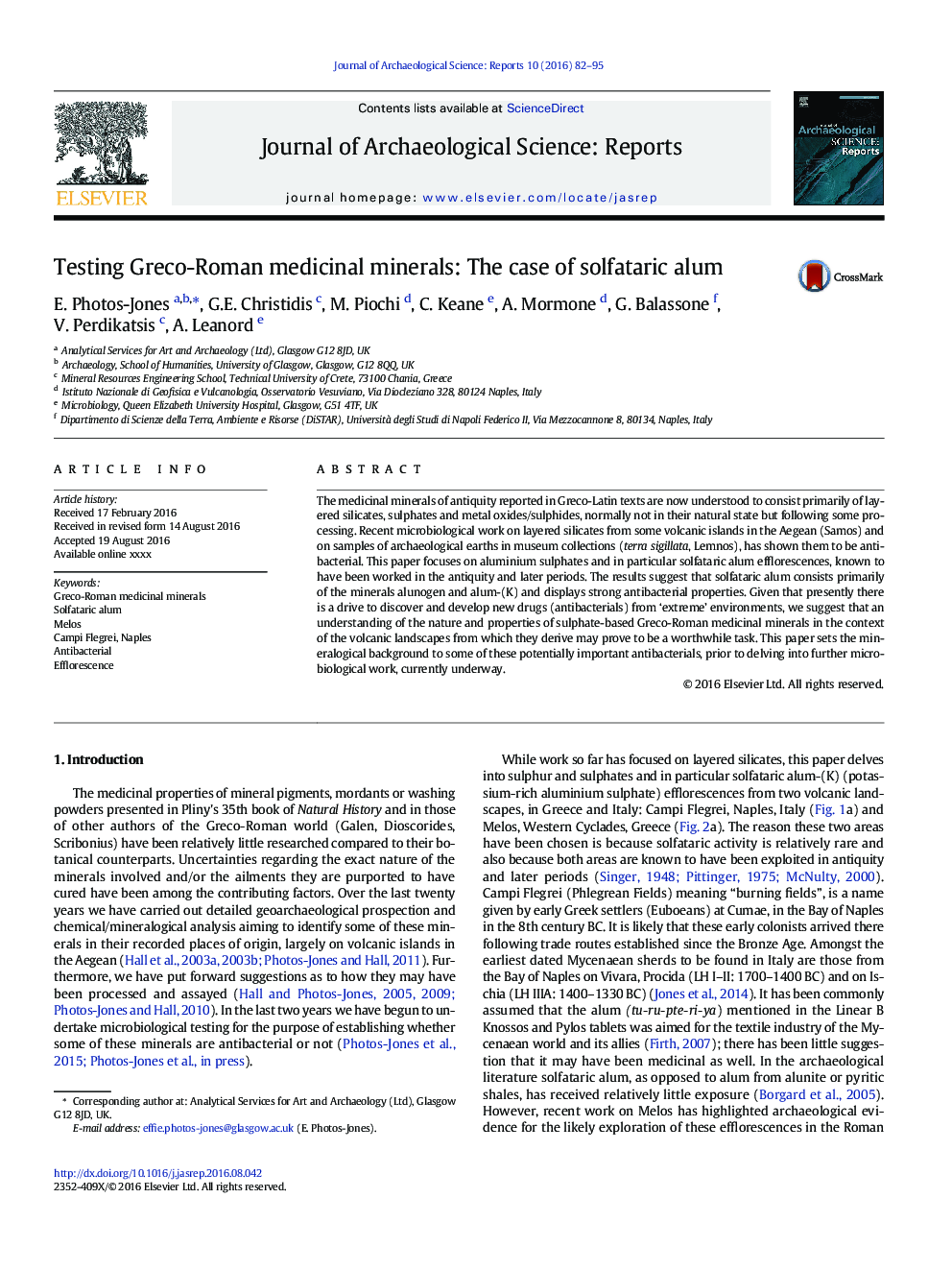| Article ID | Journal | Published Year | Pages | File Type |
|---|---|---|---|---|
| 5112226 | Journal of Archaeological Science: Reports | 2016 | 14 Pages |
Abstract
The medicinal minerals of antiquity reported in Greco-Latin texts are now understood to consist primarily of layered silicates, sulphates and metal oxides/sulphides, normally not in their natural state but following some processing. Recent microbiological work on layered silicates from some volcanic islands in the Aegean (Samos) and on samples of archaeological earths in museum collections (terra sigillata, Lemnos), has shown them to be antibacterial. This paper focuses on aluminium sulphates and in particular solfataric alum efflorescences, known to have been worked in the antiquity and later periods. The results suggest that solfataric alum consists primarily of the minerals alunogen and alum-(K) and displays strong antibacterial properties. Given that presently there is a drive to discover and develop new drugs (antibacterials) from 'extreme' environments, we suggest that an understanding of the nature and properties of sulphate-based Greco-Roman medicinal minerals in the context of the volcanic landscapes from which they derive may prove to be a worthwhile task. This paper sets the mineralogical background to some of these potentially important antibacterials, prior to delving into further microbiological work, currently underway.
Keywords
Related Topics
Social Sciences and Humanities
Arts and Humanities
History
Authors
E. Photos-Jones, G.E. Christidis, M. Piochi, C. Keane, A. Mormone, G. Balassone, V. Perdikatsis, A. Leanord,
